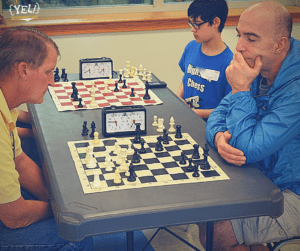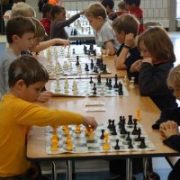USCF Ratings for {YEL!} Students
Below is a table of all {YEL!} students and their current (as of 3/16.19). It is searchable by your child’s name.
NOTE: It is not “live”, meaning it isn’t connected to the USCF database. To view “live” ratings, visit the USCF Player Search page at: http://www.uschess.org/datapage/player-search.php
USCF {YEL!} Students Ratings Table
[table “113” not found /]Yes! Your Child Can Play (and enjoy) Chess.
There are many misconceptions surrounding the ability to play chess.
-
Only smart kids play chess.
– At {YEL!}, we believe that every child has certain gifts they are given. We see enrichment as an opportunity to channel those gifts. ALL kids are smart kids. While there have been numerous studies claiming that chess may improve intelligence, especially in young children (see 10 Big Brain Benefits of Playing Chess or Compilation of Chess and Education Research Studies), there is little doubt that chess will improve your child’s concentration, and she/he will learn to be less impulsive about their next move as well as the moves made by their competitor. This will, in all probability, transfer positively into their daily life.
-
Chess is hard to learn.
– Actually, our nearly two decades of experience working with all types of students from rural communities to wealthy suburbs and everything in between, tells us that many children pick up what chess is all about much quicker than even they anticipated. Once they learn the names of the pieces, the rules around how they travel the chess board, and some basic strategies, it almost becomes second nature to them. Our teachers at {YEL!} tell us regularly how even kindergarten and first graders can grasp the game quickly. And the more they play, the more they’ll be hooked on this fun activity, often challenging their parents to play against them at home. Get ready! We hear from many parents how their child either gives them a run for their money or even gets a win after studying with {YEL!} for just a few months.
-
My child is too young to play chess.
– Not true. Plain and simple. In fact, the earlier your son or daughter begins learning chess, the better they will play as they grow older. For me, I starting teaching my children the names of the pieces at age three using a Super Mario Chess Set. At age four we started talking about how the pieces move. At age five, how all of the pieces move, piece-capture and check. Now, to be sure, there was a lot of “Space Chess” and Mario Kart chess mixed in, but starting early got them interested and they’ll have chess as a game to play for a lifetime. NOTE: My middle child enjoyed it so much, he made up his own chess puzzles.
- Chess is a life-long game where you learn something new every day. It’s like riding a bicycle. Each bike ride (or chess game) presents it’s own set of twists, turns, and bumps along the way. And it’s fun at the same time!
-
Competitive sports are where it’s at.
– Well, you may personally like hockey, basketball, soccer or baseball, but these great “team” sports aren’t for everyone. Some kids prefer one-to-one competition, find team play confusing, or just don’t

Chess is a battle of the minds!
enjoy sports with a ball (See Benefits of Fencing with Ro Sobalvarro for additional ideas) … and no one can convince us that chess isn’t competitive. It’s a battle of the minds, and it will help to improve patience and focus. If your kid doesn’t exhibit either of these traits right now, they may develop them over time playing chess. And they’ll make new friends in a smaller group environment.
-
Can you play traditional sports and chess?
– Absolutely. NFL Running Back, Adrian Peterson, plays chess to relax during down time. The Edina, MN girls high school hockey team actually employed {YEL!} coach, Igor Rybakov, to teach them chess and with the goal of helping their focus, concentration, and strategic thinking. Personally, my classes have been filled with multi-sport athletes who enjoy making layups just as much as finding checkmate.
-
It promotes good sportsmanship.
– Chess tournaments don’t have a referee who throws a flag or blows a whistle when there is a penalty. Chess players have to follow the rules themselves and mostly referee their own play. If an error or illegal move occurs and the players can’t rectify it themselves, they will call in the tournament director to make a judgement on the game. If a player disagrees with the tournament director or doesn’t follow chess tournament etiquette, they may be asked to forfeit a game or even be removed from the tournament.
- At {YEL!} Chess Tournaments and in our classes, we ask students to shake hands at the beginning of each game and at the end of each game.
-
But are there are real benefits to playing chess?
– Absolutely, positively, YES! These days it seems like there’s a study about almost everything, and they all claim incredible benefits. Considering that chess has been around since 6th-century India, there’s hundreds of years of studies into the benefits of the game. There has been a proven strong correlation between chess and increasing your IQ. Chess is also known to improve your memory, stem

Chess is for adults and youth.
Alzheimer’s, and increase creativity, as it exercises both sides of the brain.
-
As a parent, what’s in it for me?
– Well, to begin with, chess doesn’t require expensive equipment, uniforms, or contributions to things such as practice ice time. Even better yet, your car and house won’t smell like a locker room, and chess doesn’t make for seemingly endless piles of laundry. But perhaps most importantly, chess is the same for girls and boys, and will improve their confidence as they learn more and more exciting strategies that will be potentially useful for many decades of playing the game. There no best size or shape to play chess. Just a willingness to learn and have fun at the same time.
Signing your child up to learn chess with {YEL!} may be one of the best decisions you make for them. One that they’ll be thankful for, for many years to come.
Click Here to read more about {YEL!} Chess programs and other {YEL!} programs.
Five Components of every {YEL!} chess class

• “What did you learn in chess class today?”
• “You got chess dollars?!!? Awesome. How did you earn them?”
• “Did you play a chess game in class today?”
If you have a child in a YEL chess class, perhaps you’ve asked your child any, if not all of these questions at some point.
Every class YEL teaches, whether it is chess, LEGOs, guitar, fencing, sewing or any other YEL class, has one mission:
• To engage youth to THINK, LEARN and PLAY WELL.
Every chess class has five components every student should get out of each class. We call this our recipe for success in chess. The five components of each chess class are:
• Teach It!
• Practice It!
• Puzzle It!
• Play It!
• Chess Dollars and FUN!
TEACH IT!
The Teach It! time should feel like The Price is Right…or any other game show. Kids should be pumping their hands in the air, anxious to answer the next puzzle and they are rewarded with a Chess Dollar for answering the teacher’s questions.
YEL instructors are trained to give a 10-15 minute lecture at the beginning of each class. These lectures can be as basic as piece movement or castling and as complex as Queen Sacrifices, the Fried Liver Attack or Rooks on the seventh rank. Each lesson is designed for multiple levels in the same classroom. Each lecture starts with basic positions and gets progressively more difficult. For instance, if we are teaching the King & Queen versus King, the teacher would start with a basic puzzle.
From here, the teacher asks, “What are white’s available checks?” We want the Teach It! time to be collaborative learning experience for everyone, so the teacher will take all sorts of answers. Some things students might say are: Qc5+, Qe7+, Qg7+, etc. The teacher discusses each answer:
1. Qc5+…Ke8 or
1. Qe7+…Kg8
Then we focus in on the best answer, or answers. In this case, there are actually four moves that lead to mate-in-one. Can you find all of them?
Yes, 1. Qf7# is one option. Good job! Chess Dollar for you!
What are the others? Scroll down to see.
Yes, 1. Qd8# works. Of course 1. Qc8# and 1. Qb8# also work.
Great job! $1 Chess Dollar for you.
After thoroughly discussing the basics, YEL teachers go over more difficult puzzles (See your child’s Lesson 2.06 worksheet for more KQ vs K puzzles…NOTE: It’s possible your child hasn’t had this lesson yet as it is usually the 12th lesson of our system). Then it is on to…
PRACTICE IT!
Practice It! time is an opportunity for students to drill the concept a bit more so they understand when they come across it on the chess board. For the above chess lesson, we ask the students to set up the following position on their board:

White is up a Queen in the endgame. A winning position for any player who has practiced this lesson. From here White needs to simply follow the recipe for a win: 1) Pick a jail; 2) Create a box; 3) Copy Cat; 4) Lock the King in jail; 5) Bring in YOUR King and 6) Checkmate with Queen.
You did it! Chess Dollar for you!
Once they do this, they are asked to switch places and have the the other player win from the same position. The instructor is constantly canvassing the room and coaching any struggling students.
Students who finish early can move on to…
PUZZLE IT!
During Puzzle It! time, students are given a sheet of 12-24 puzzles varying in difficulty. They can solve as many puzzles as time permits. The YEL Chess Coach is still canvassing the room, looking for opportunities to help each child.
You solved 6 puzzles? Awesome! Here are $2 chess dollars for you!
After a child is finished with puzzles, or about 10 minutes into Puzzle It! time, they are paired up with a student of similar age and skill for…
PLAY IT!
This is where the rubber meets the road. It’s where the PLAY WELL component of our mission comes in. Students are given 20-30 minutes of playing time each week. They pair up with a classmate, friend or new opponent, shake hands, say “Have a good game.” and play chess. Our coaches continue to canvas the room, but we have found varying coaches have varied approaches.
• Coach A may coach during each game. Find suggested moves, whisper a strategy in one player’s ear, encourage players that are struggling, etc.
• Coach B may treat Play It! time as a tournament, where there is no coaching during games. Encourage students? For sure: i.e. “Keep working hard, a solution might present itself.”, “Don’t give up. There is still a lot to learn.”! But coaching happens after the game is complete. We have found both approaches are highly effective and which style is really a matter of personal coaching style.
Chess Dollars and Fun!
You’ve seen chess dollars referenced throughout this article. The chess dollars function as merit points based on a student’s work and focus in that day’s chess class. Students should receive between $5-10 chess dollars per day. Students can earn chess dollars (as mentioned above) in a number of ways:
• Answering questions during the Teach It! lecture time.
• Solving positions during the Practice It! time.
• Solving puzzles during the Puzzle It! time.
• Creating checkmate, castling, finding a useful Pin or Fork or other tactical gains during the Play It! portion of class.
• Playing hard, keeping your focus and helping your teammates in class!
As you can see, the Chess Dollars aren’t based solely on winning. And different levels of students can earn different levels of dollars. It’s quite common for a fourth year student to have $300 chess dollars saved up.
What are the chess dollars used for? Chess PRIZES! We’ve got ’em all: Rookie Trophies, Pro, All Star, Expert and Grandmaster trophies too, chess keychains, magnetic chess boards, chess pins, knight erasers, etc., etc.
What else? Chess Dollars are a great way for students to learn how to watch over their money. Maybe even learn a bit about budgeting for the big prize they are saving up for.
All in all, the class is designed for multiple levels of chess students to work at their level for fun, merit and the love of the game.
We hope you consider signing up for a YEL Chess Class or YEL Chess tournament in the future.
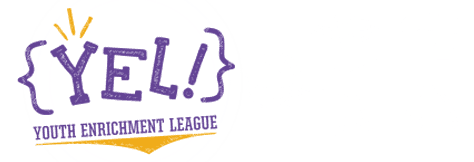
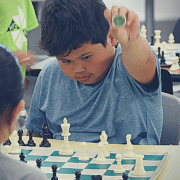 2019
2019

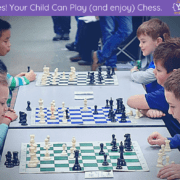 2019 {YEL!}
2019 {YEL!}
